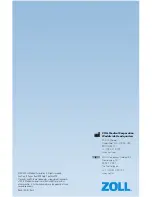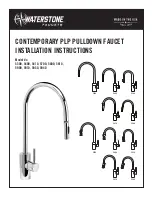
Once he begins to look comfortable and is demonstrating an understanding of how to avoid the remote
corrections, you can then move on to using the remote trainer for modifying such behaviors as keeping
him out of garden, preventing him digging holes, or to teaching him to stop barking on command.
Q: If my dog becomes confused when I correct him with the remote transmitter within the containment area, what
should I do?
A: If this or any other unexpected behavior happens, your best choice is to keep your response simple -
one that asks your dog to do something basic. Pick something your dog has done a thousand times before,
such as the "Sit" and "Stay" command. Reliance on an old habit can bring a misbehaving dog - even a
frightened or frazzled dog - back into the comfort zone. This will enable you to reward your dog or to
regroup should this become necessary.
Q: Other than acting confused in response to receiving the correction from either the containment or the remote
transmitter - what else might I expect to see him do?
A: Every dog has his own unique personality and thus will have his own way of responding to an
electronic correction. Some of the more common ways a dog may inappropriately respond to the first few
electronic corrections include hiding under a bush or table or
running into the garage. It is important that no matter which
reaction your dog chooses that you always respond the same
way. As was described earlier, keep your response simple and
direct your dog to a behavior that he already is comfortable
with, such as the "Sit" or "Stay" commands.
Q: If I have supervised my dog receiving the first correction from
the containment transmitter, do I have to provide the same on-leash
supervision with the remote transmitter?
A: Yes, it is always a good idea to have your dog on a leash the
first time he receives a correction from either. It is also a good
idea for you to supply this same on-leash supervision anytime
you use the remote transmitter in a new situation. For example,
if your dog has successfully learned to respond to the remote
transmitter in your yard, your should still have him on a leash the
first time he receives the correction inside your home.
Q: Is there one general rule or tip I should keep in mind when
training my dog with the PLUS system?
A: Perhaps the one general rule most essential for training with the PLUS system is work on only
one behavior at a time. For example, train your dog to yard boundaries first and once this training is
complete then, and only then, begin to use a remote transmitter to improve obedience commands.
Also, always give the correction at the "same time." That is, do so only when your dog is actually
misbehaving, not before the misbehavior occurs or after the misbehavior has stopped. This is important
because it gives your dog a chance to learn and to understand what causes the correction in the first place.
Moreover, it is critical not to correct out of frustration or as the result of misguided humor. As an owner,
you need to be as disciplined as you want your dog to be.
CONCLUSION
This section of the manual is intended to help those dog owners using the PLUS system by providing some
information that has some foundation in training philosophy. Before you use the PLUS system be sure you
completely understand how to operate and train with the equipment before placing it on your best friend.
18
Содержание Radio Fence Plus Remote Trainer
Страница 1: ...Radio Fence Remote Trainer Plus Owners Manual ...
Страница 2: ......
Страница 23: ......
Страница 24: ...Radio Systems Corporation 10427 Electric Ave Knoxville TN 37932 400 409 2 Mounting Template 3 150 ...





































